A GUIDE TO TRUCKS FOR WHICH BASIC TRAINING - REFRESHERS & CONVERSION COURSES ARE AVAILABLE -
Counterbalance trucks – These machines are the most common and versatile trucks in the workplace today. They are usually known as “Forklift trucks” because they usually have forks, but they can have other special attachments including Booms (pictured left) Bale or Reel clamps, extending or rotating forks.
“Specific Training” is required for special attachments but the great thing about In-company training is that it is included as part of the course, as is moving the loads that will be used in the job role.
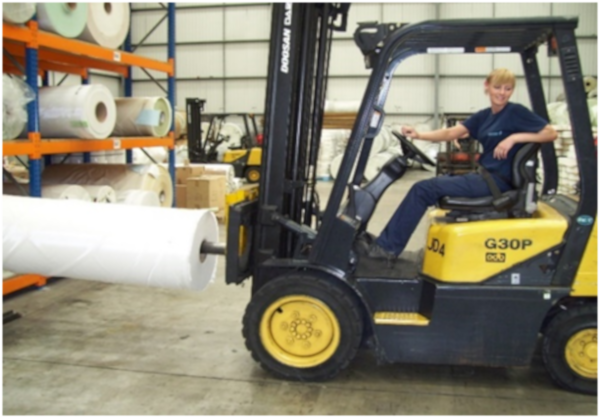

Counterbalance trucks come in a variety of sizes with different lift capacities. Although all sizes work on the same Counterbalance principle, it is recommended that familiarisation training is given on larger machines above 5 ton.
Counterbalance trucks can be Gas, Diesel or Electric powered & each have advantages and disadvantages. Training is always given on safe refuelling or charging as part of the course.
Training on all trucks will always include Stability theory, understanding the Capacity plate, hazard awareness, correct operating theory & how to do a pre-use check on the machine.
Reach Trucks – are very common in warehouses where they are used to stack & De-stack to high levels in racking systems.
The machines have solid suspension and they “Reach” loads in and out of locations whilst stationery which makes them very stable.
They are not quite as versatile as a Counterbalance truck which can cope with a yard that isn’t perfectly flat and they don’t have the range of attachments that they have, but they can do far more than other specialist stacking machines such as VNA trucks.
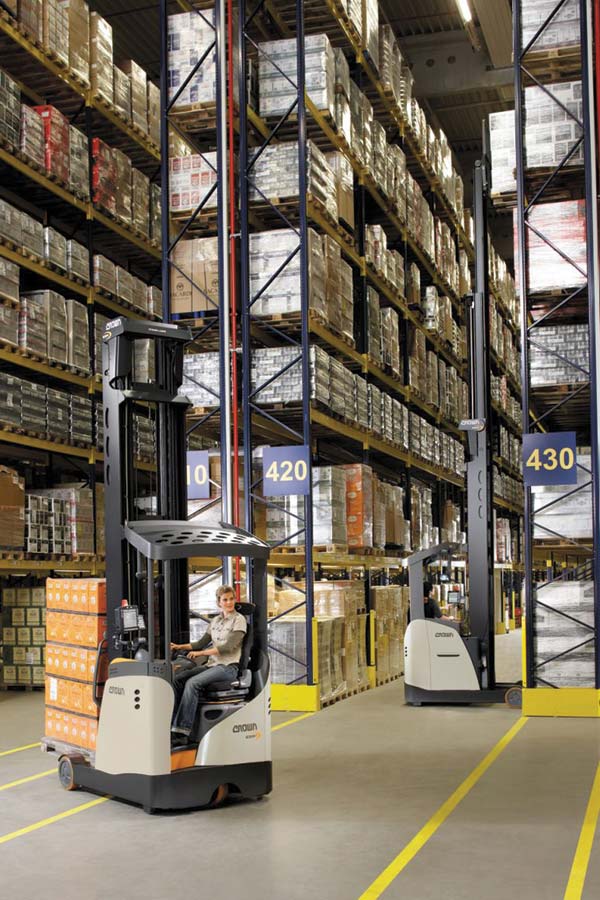
Reach trucks can load and un-load wagons, so long as the ground is level, they can bulk stack, service production and generally perform a lot of the tasks that the Counterbalance truck does.
Although they turn in reasonably narrow racking aisles, they are not Narrow Aisle machines, unlike “Pivot steer” trucks but they remain one of the most popular and most often used trucks in the warehouse.
Pivot Steer trucks - These machines are often known as “Flexi” or “Bendi” trucks, but those names are just the manufacturers brand name. Collectively, they are all Pivot steer trucks. “Aisle-master” is another popular brand.
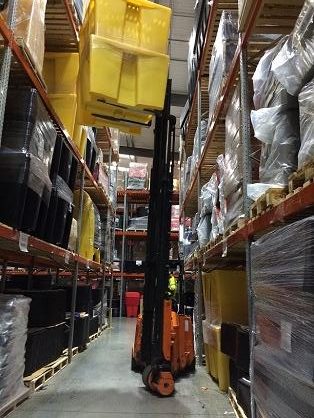
Pivot Steer Trucks are becoming increasingly popular in warehouses working in high level racking systems. They have the unique ability to be able to turn safely with the load raised and they do it by pivoting just behind the front wheel.
Because they Pivot they need less room to turn and can operate in narrow aisle racking systems. I have trained on these machines up to 10.5 meter high. (Often they have a camera system for higher levels)
These trucks are great space savers but the real beauty of the machine is that it can come out of the racking system and work like a Counterbalance truck.
It can be used to load and unload wagons in a yard or Bulk stack loads in a warehouse, something that a specialist Very Narrow Aisle machine cannot do.
A Conversion Course to use these trucks for experienced Counterbalance or Reach truck operators is only a 1 Day course for 3 people.
Pedestrian Stackers or Pedestrian Pallet trucks – These trucks are walked into position by the operator and because of this, safe walking techniques must be learned to prevent operators running over themselves or becoming trapped between the machine and fixed objects.


Some machines have platforms that can be folded down so the operator can stand and ride on the truck to use it.
Even riding on this type of truck however needs to be done safely with accidents involving leaning out or having feet outside the platform which can result in serious injury in a collision, so training on this type of machine is very important.
Some machines (pictured on the right) have the added function of Reaching out and they are known as Pedestrian Reach Trucks. (Note the platform folded away to stop it becoming a hazard when walking)
Order Pickers – A pallet is placed on the forks at the front of the machine and the operator positions the truck side-on to a target location in the racking system. The cab and forks are raised together until level with the pallet to be picked off.
The operator can now take boxes off the target pallet in the rack and place them onto the picking pallet.
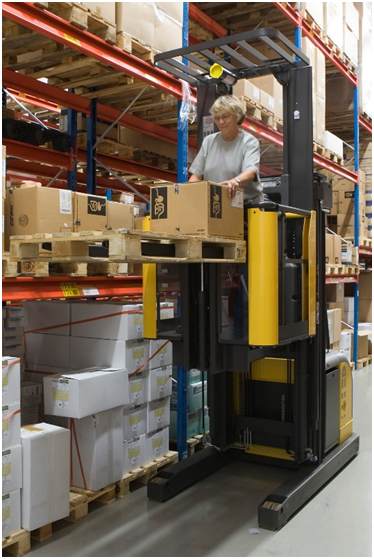
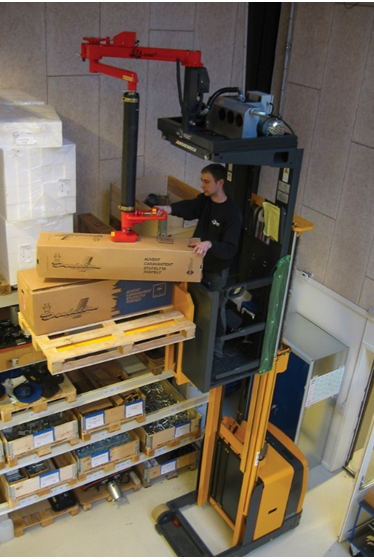
There is an element of Manual Handling when picking and it is important to include this in the course for an Order Picker. Some machines may have Manual Handling aids fitted to assist lifting heavy loads as seen in the picture.
Unlike VNA trucks, Order Pickers are not rail or wire guided, it is the operator who uses their driving skills to position the truck correctly.
Order Pickers work in standard sized aisles and are quite versatile. They can come out of picking aisles and transport the pallet of picked items into the warehouse where they can be wrapped and prepared for dispatch.
Mobile Elevated Work Platforms – Most falls from height occur when falling from ladders so employers are increasingly using Mobile Elevated Work Platforms (MEWP’s) as a safe alternative.
There are different categories of MEWP and each one requires a separate training course. The different categories include Scissor Lifts (pictured right) & Booms (sometimes called Cherry Pickers - pictured left) Van and Trailer mounted are other separate categories.

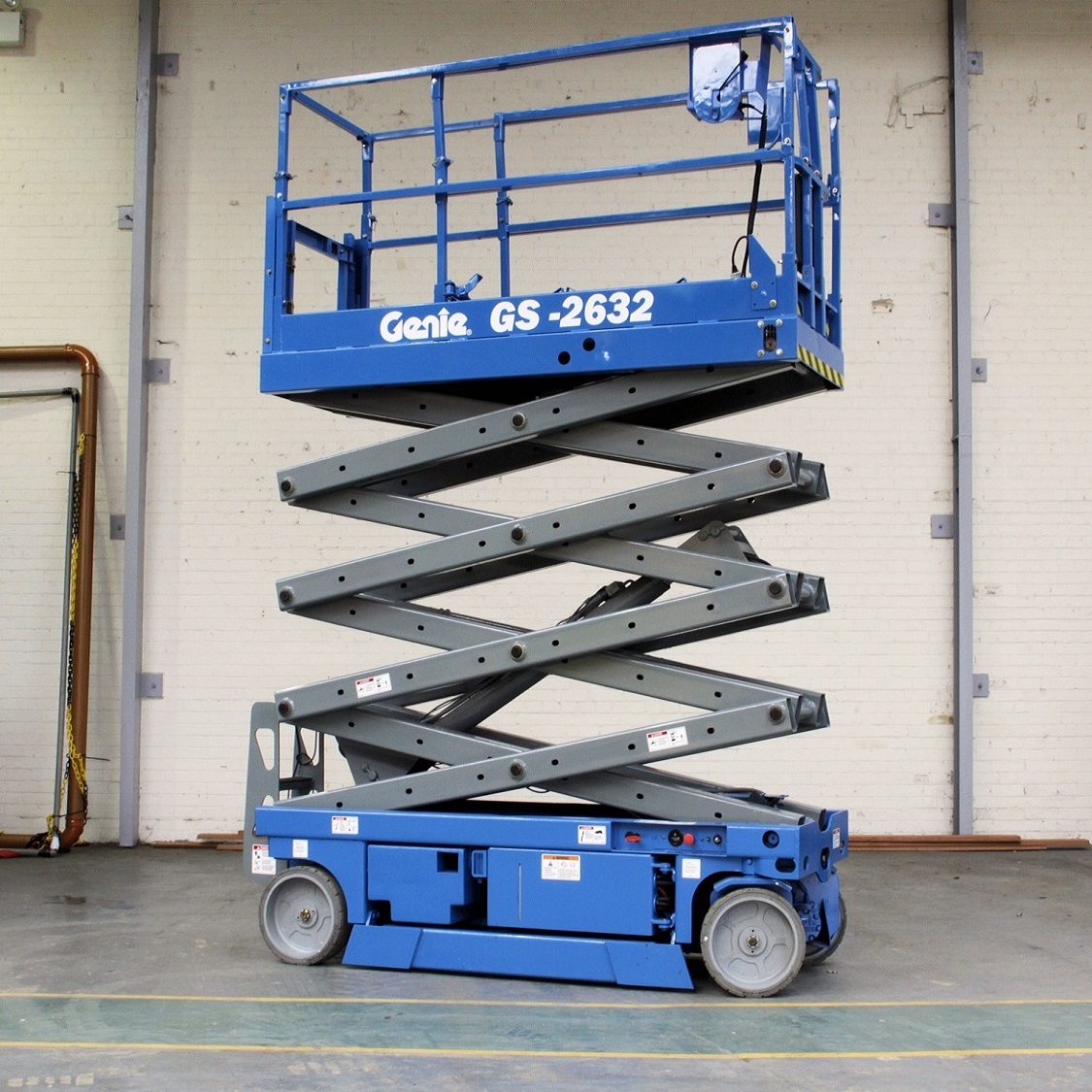
Poor set-up or incorrect operating are important factors to be covered in training as are weather and ground conditions.
Operators need to know how to do a Pre-use check and how to test the emergency controls. They need to know how to use the manufacturer’s handbook to get vital information about the machine and use it for familiarisation on other machines in the same category that they may hire in and have to use.
The course also includes safe use of harnesses at height, harness fitting and inspection.
6 people maximum can be trained on one machine in a day or 3 people trained on 2 machines.
Phone to discuss your training needs or email for details of training provided, including timescales and cost, or if you need any technical advice or questions answered.